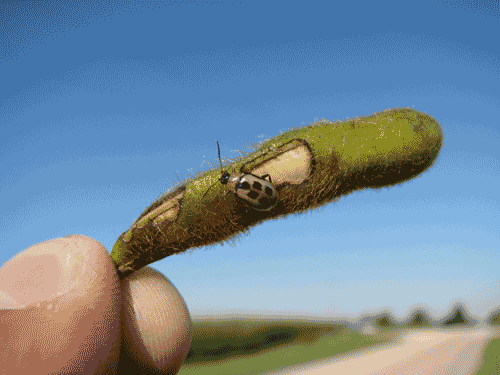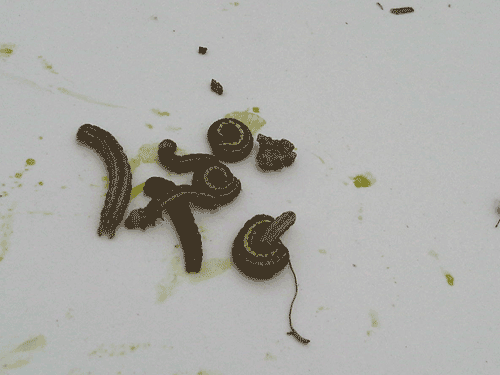What’s bugging you?
WEATHER PATTERNS COULD BE IMPACTING INSECTS
in most canadian homes and municipalities a mild winter is a welcome savings from the added heating costs and labour needs usually associated with the cold season. But for Ontario growers the same story may not ring true in 2012. In fact, warm temperatures and low precipitation could cost farmers in heightened pest problems now and an unfavourable weather pattern in the future.
“Warmer and drier are two characteristics clearly observed over the last 12 months and are uniquely uniform across Ontario”, says David Phillips, senior climatologist with Environment Canada.
winter on record
According to national records, Phillips says this past winter ranks as the second warmest and ninth driest in 65 years. He notes that record low snowfall totals were reached and every month was consistently warmer than average.
“Essentially winter was cancelled across Canada and particularly in the farming areas of Ontario because both the look of snow cover and the feel of cool temperatures were not experienced,” he says.
In theory, this abnormal trend is likely to have significant impacts on the life cycle of some species. The potential effects for crop growers, specifically in the area of pest management, are currently a focus of field research.
impact on agriculture
One advantage of harsh temperatures and snowfall is the effective break of pest and disease cycles. “Growers benefit from the cold as it kills many pests and resets populations,” says Phillips. “But this year the warm weather means that pests survived and possibly even thrived.”
Several insects were active early in the spring. There was an early start to the season for migratory moths, and an early emergence of a higher number of adult bean leaf beetles.
PHOTO: BEAN LEAF BEETLE

“I started to see some damage from bean leaf beetle in soybeans in May,” says OMAFRA field crop entomologist Tom Cowan. “Typically feeding damage by this pest is not serious in Ontario though higher populations can cause defoliation to go beyond thresholds. Insecticide seed treatments typically do a good job of controlling this pest but growers should still be keeping an eye out for damage.”
Armyworms also arrived early this year. High numbers were detected in wheat fields by the first week of June. Armyworms typically feed in the lower leaves of the wheat and work their way up. Feeding is done at night and sometimes on overcast days. Cowan says with fewer leaves this year after all of the frosts, protection of the flag leaf is particularly important. Early control with insecticide is more effective on smaller larvae.
PHOTO: ARMYWORM

Cowan also suggests looking carefully at the larvae on the plants and checking them for small, yellowish oval eggs deposited just behind the head. “These are eggs belonging to a parasitic fly and will soon hatch and kill armyworm larvae,” he says. “Fungal and bacterial diseases also attack armyworm and can quickly reduce populations.”
good vs. bad
Cowan also notes that beneficial insects may have experienced better survivorship over the winter as well, so more pests don’t necessarily mean more crop damage.
For example, Cowan heard reports of cereal aphid numbers getting fairly high in some wheat fields. “But typically, aphids aren’t a serious problem in wheat since beneficial insects are very effective at keeping numbers in check.”
Provincial data is currently being collected to determine which insect populations have in fact increased across Ontario. OMAFRA data includes reports of increased pressure by alfalfa weevils and black cutworms, however, overall population conclusions will not be made until more observations have been reported.
“Insect forecasts are very difficult to predict”, explains Cowan. “There are many factors involved in their survivorship and winter temperature is just one.”
Phillips and Cowan agree that regardless of mild winter conditions, spring weather also impacts pest populations. “Higher insect numbers in the winter is not a guarantee there will be more pest problems throughout the season,” says Cowan.
And although mild temperatures are causing a buzz across Canada, Phillips says the lack of moisture could be the bigger issue. “Temperature may have brought survival through the winter, but we’re not currently seeing the precipitation needed for insect breeding,” he says, noting that many common insects as well as agricultural pests rely on water to reproduce.
Growers are urged to scout fields regularly and record pest findings. “The best thing to do is to keep on top of pest numbers by going out to the field and looking at which bugs can be seen and where they are,” Cowan says. “These reports are vital for growers to compare to established thresholds and determine control options if necessary.”
seasonal outlook
Preliminary data from Environment Canada suggests the May heat wave will lead to a ranking in the top ten warmest springs in over six decades.
Phillips says the above average temperature trend that has been consistent for the past year is expected to continue province-wide through the summer months. And when it comes to rain, “Summer precipitation is difficult to predict, but moisture through August is forecasted to range from normal to below normal,” he says. •






















